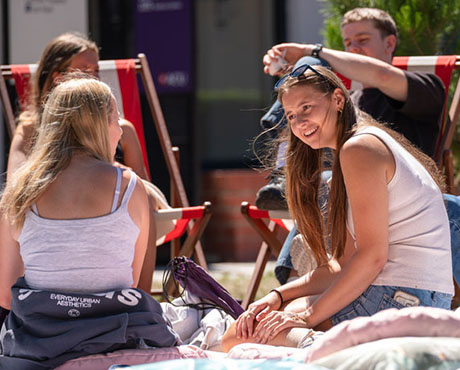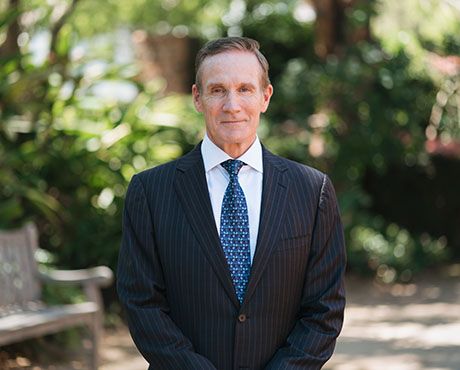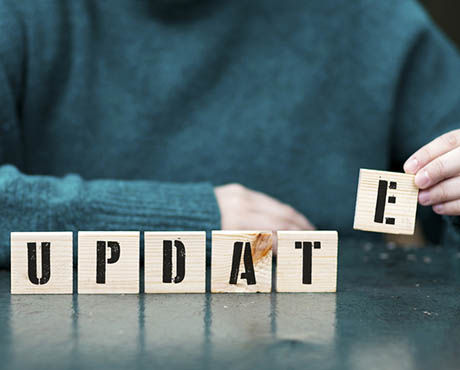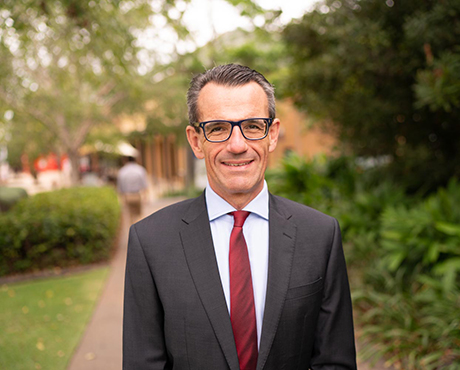
Have you visited Viva Engage yet?
News 11 JuneViva Engage is here. Access it easily via Microsoft Teams.
01 November 2016
Share

Immersive 3D soft projection at Soap Factory, Rome. (Photo by H Short)
Members of the Julfa project team, Dr Judith Crispin, Professor Harold Short and Drew Baker, presented an exhibition and colloquium in Rome (23 to 25 September), in association with the events marking the formal opening and blessing of ACU's Rome Centre.
The Julfa Cemetery Digital Repatriation Project is working to digitally reconstruct an ancient Armenian cemetery, Julfa, destroyed by Azeri troops at the beginning of this century. Working with cutting edge 3D visualisation tools, the project’s researchers are making use of photographs taken during the 20th Century along with 3D scans of the few extant monuments to create an immersive 3D model of 2000 medieval and early modern tombstones.
The exhibition, held at the newly renovated Soap Factory in Rome’s Garbatella district, presented the project's first immersive 3D displays. Two large projections showed the cemetery site along with 15 individual funerary monuments called khachkars (cross-stones). The exhibition is pioneering a revolutionary new approach to combining still images, 3D audio, 3D visualisations and traditional photography in order to render an emotionally compelling and dignified recreation of a destroyed cultural site. The exhibition was attended by large audiences, many drawn from the Armenian diaspora in Rome. Some visitors travelled from Milan, Madrid, and even from as far as London.
The exhibitions in Rome included: historical photographs by Argam Ayzazyan, Aram Vryur and Zaven Sargsyan, new photographs by Dione McAlary and Judith Crispin, audio field recordings by Kimmo Venonnen, 3D field scans by Drew Baker, Judith Crispin, Dione McAlary, Hamlet Petrosyan and Father Shahe Ananyan. Topographical and monument reconstructions were done by Drew Baker, image editing by Judith Crispin and technical support was provided by Craig Williams and his team from Mosaic, Adelaide.
The exhibition was accompanied by a colloquium that featured talks by renowned Armenian archaeologist Hamlet Petrosyan and, by Skype from Armenia, photographer Argam Ayvazyan. The colloquium opened with welcomes from Professor Wayne McKenna, Deputy Vice-Chancellor Research, and Vartan Karapetian, Cultural Attaché from the Armenian embassy to the Vatican, on behalf of the Ambassador.
The enthusiasm and support of the Armenian community was also evident in a subsequent visit to the monastery at San Lazarro degli Armeni in Venice, where Father Hamazasp has offered to host a two-year installation of the Julfa Project materials. Closer to home, the exhibitions will be shown early in 2017 at the State Library of New South Wales, to mark the launch of its new 'Armenian Collection', which is documenting the arrival and development of Sydney's 45,000 strong Armenian community. The Julfa Project also plans to exhibit in Melbourne, as a joint sponsorship by a city gallery and the Institute for Religion and Critical Inquiry.
Now in its second year at ACU, the project is indebted to the far-sightedness of the Vice-Chancellor and President, and the Deputy Vice-Chancellor Research, and the invaluable support they have provided to the project since its inception.
For more information, visit the 24 October Staff Bulletin article or the project website.
Judith Crispin and Harold Short
October 2016

Viva Engage is here. Access it easily via Microsoft Teams.

The library is supporting the ACU Historical Children’s Book Collections 2025 Fellowship. It is an opportunity to conduct research on our historical collection of children’s books, located at St Patri...

A new Adjunct and Honorary Titles Policy and Procedure has been approved and is now in effect at ACU.

Teaching staff are encouraged to check their units have been correctly linked to their names for the Student Evaluation of Learning and Teaching (SELT) surveys in upcoming teaching periods.

On 24 June ACU will transition to the new EBSCOhost. This will result in a new look and feel across some of our most popular databases. Learn more about the changes and what action may be required of ...

Include an additional survey item in the Student Evaluation of Learning and Teaching (SELT) survey for units that are offered in ACU Online Term 2 (202536).

Advance your career in teaching and learning with the Graduate Certificate in Higher Education. Enrol by 22 June to get started in Professional Term 5.

ACU has three student modules: the Academic Integrity, Respectful Relationships, and Protecting our Children modules. Semester 1 students must complete their modules by 1 July to access their results ...

The Student News and Events bulletin is sent to all students, nationally, and includes a broad cross-section of news, announcements, events and stories from across the university. The May edition is o...

Please be aware of the following changes to payroll processing dates.

A message from the Chief Operating Officer Patrick Woods.

As part of Student Administration's commitment to service excellence, AskACU will be running on-campus re-enrolment drop-in sessions in July, while CMAS enhancements will improve information available...

Say goodbye to Workplace and hello to Viva Engage. Learn about our new community structure and all-staff community.

An update from the Executive Dean of Law and Business Professor Andrew O'Neil.

A reminder to all academic staff that the mandatory Notice of Intent, for those intending to apply for promotion in the 2025 round, must be submitted by 11.59pm this Friday (30 May).

Expect a few email notifications as we prepare to welcome you to Viva Engage next week.

Include an additional survey item in the Student Evaluation of Learning and Teaching (SELT) survey for units that are offered in Professional Term 4 (202547).

Register for these 15-minute sessions to learn more about the variety of online researcher profile platforms and what is involved in setting up, linking and updating your profile.

ACU is developing a new Education and Student Success Plan to ensure our university continues to provide a high-quality, student-centred learning experience. Find out how you can contribute to the pla...

Lecturers-in-charge can make a direct determination of Poor Academic Practice (PAP) for students who engage in minor forms of academic misconduct. Learn why they can be valuable to staff and students.
Visit Service Central to access Corporate Services.